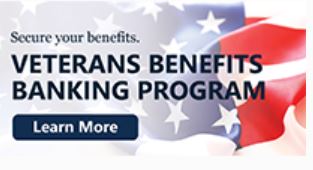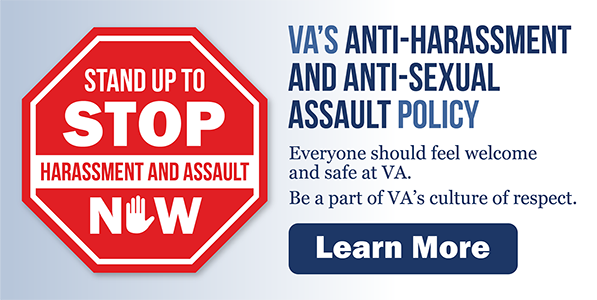Outreach, Transition and Economic Development
Frequently Asked Questions

- How can TAP partners help me?
- How do I Iocate the TAP office nearest me?
- When should I start preparing for transition?
- What is the Military to Civilian Readiness Pathway (M2C Ready)?
- What is a VA Benefits Advisor? When can I use them as a resource?
- Can I use VA benefits while I’m still in uniform?
- What is the Military Life Cycle model?
- What are Military Life Cycle modules?
- How are MLC modules different from the VA Benefits and Services course?
- Will there be more MLC modules?
- Do the MLC modules include information about DoD resources as well?
- Do any of the MLC modules target the Coast Guard specifically?
- What are Economic Investment Initiatives?
- How is VA helping service members after they transition?
- What is VA Solid Start?
- What is the Office of Transition and Economic Development?
- How does the VA Benefits and Services course and curriculum help members of the reserve components?
- How do the Military Life Cycle (MLC) modules engage members of the reserve components?
- What is VA doing to support community integration for transitioning service members and Veterans?
- What is VA doing to help service members at risk for homelessness?
- What is VA doing to support access to mental health treatment and suicide prevention resources?
1. How can TAP partners help me?
The Transition Assistance Program (TAP) is run by the following interagency partners:
- Department of Defense (DoD)
- Department of Labor (DOL)
- Department of Education (DOE)
- Department of Veterans Affairs (VA)
- Department of Homeland Security (DHS)
- Small Business Administration (SBA)
- Office of Personnel Management (OPM)
Together, these interagency partners implement the TAP Curriculum—learning modules and opportunities that help provide the skill building, resources, and tools you need to achieve emotional health, physical health, and economic stability in civilian life.
2. How do I Iocate the TAP office nearest me?
To locate the TAP office closest to you as well as access Service-specific transition resources, visit your Service-specific transition homepage:
3. When should I start preparing for transition?
From your first duty station on, you should be aware of and understand all the available resources you may be entitled to, especially those that can help you prepare for a successful transition. In September 2019, the Department of Defense (DoD) and the Department of Veterans Affairs (VA) approved the Military to Civilian Readiness Pathway (M2C Ready), which defines the transition period as beginning as early as 365 days preseparation and extending to 365 days postseparation. Retiring service members may start the transition process as early as two years before separation.
4. What is the Military to Civilian Readiness Pathway (M2C Ready)?
The Military to Civilian Readiness Pathway (M2C Ready) addresses Executive Order 13822 “Supporting our Veterans During Their Transition from Uniformed Service to Civilian Life” and National Defense Authorization Act (NDAA) for Fiscal Year 2019 Section 522 and Section 552. M2C Ready is an overarching transition framework that establishes the transition period as beginning 365 days preseparation and extending to 365 days postseparation.
The goal is to align all the various components of transition and provide service members leaving the military with an understanding of, and easy access to, all the benefits and resources they are entitled to. M2C Ready provides interagency support to help ensure a holistic and successful transition for service members, Veterans, and their families. VA, DoD, and the Department of Labor (DOL) partners with public and private sector organizations to support this important initiative. Partners include, but are not limited to:
- Other Federal Agencies
- Veterans Service Organizations
- National Association of State Directors of Veterans Affairs
- Student Veterans Service Organizations
- Non-Governmental Organizations and Other Community Resources
5. What is a VA Benefits Advisor? When can I use them as a resource?
VA Benefits Advisors are trained VA contractors at military installations around the world. They deliver the VA Transition Assistance Program Curriculum, but can also help service members, Veterans, family members, and loved ones anytime during a military career. Connect with your VA Benefits Advisor to learn how to use VA benefits while still in uniform, get your VA questions answered, find local support, and prepare for transitions. Your installation TAP Manager can connect you with your local Benefits Advisor.
6. Can I use VA benefits while I’m still in uniform?
Yes! Take a Military Life Cycle (MLC) module to learn more about the benefits and services available throughout a military career.
7. What is the Military Life Cycle model?
The Military Life Cycle (MLC) model begins a service member's transition preparation early in their military career. Service members have key touch points throughout their MLC that provide opportunities to align their military career with their civilian goals. Early connections with VA may make a difference in a military career or transition.
8. What are Military Life Cycle modules?
Military Life Cycle (MLC) modules are 45- to 60-minute information sessions to help service members and their loved ones plan for the future. Each MLC module covers a specific topic—such as education benefits, home loans, or life insurance; resources that support social and emotional health; resources that help transitioning service members integrate into a civilian community; or survivor and casualty assistance. They can be taken at any time during a service member’s career. MLC modules are especially valuable after major life events: permanent changes of station, marriage, or the birth of a child. Explore the current topics for in-person or online MLC modules.
9. How are MLC modules different from the VA Benefits and Services course?
VA Benefits and Services is part of the required TAP Curriculum for transitioning and retiring service members. MLC modules are not required. Service members can attend the MLC modules of their choice. Service members can and should take MLC modules at different times in their careers—when it is right for them!
10. Will there be more MLC modules?
Yes. More MLC modules are coming on topics like caregiver support programs and education benefits for family members. Your local VA Benefits Advisor can provide more information once they are available.
11. Do the MLC modules include information about DoD resources as well?
Yes. MLC modules include different benefits and services service members can use throughout their military careers, including VA and DoD resources. DoD resources are included in the VA Education Benefits, Social and Emotional Health Resources, Community Integration Resources, and Survivor and Casualty Assistance Resources MLC modules.
12. Do any of the MLC modules target the Coast Guard specifically?
All of the MLC modules can be used by the Coast Guard. The Community Integration Resources MLC module includes information about the CG SUPRT program. CG SUPRT has free and confidential services to help Coast Guard personnel.
13. What are Economic Investment Initiatives?
Economic Investment (EI) Initiatives provide transitioning service members, Veterans, and their families opportunities to communicate directly with local, state, and federal government representatives. EI Initiatives connect military members in specific geographic communities with information and resources that promote economic well-being. This includes hosting job fairs to link Veterans directly with hiring employers. They also bring key players together to discuss solutions to ease challenges in the Veteran community and form sustainable public-private partnerships. EI Initiatives include follow-up visits to the selected geographic region six months, 18 months, and three years after the initial event. The Office of Transition and Economic Development (OTED) will host EI Initiatives twice annually in coordination with VA regional offices. Currently, OTED hosts EI Initiatives in San Juan, Puerto Rico; and Puget Sound, Washington.
14. How is VA helping service members after they transition?
Transition doesn’t stop with a DD 214. Through new and existing programs like VA Solid Start, VA is working to maintain contact with Veterans throughout their first year as civilians. Year one as a civilian has a lot of change—but the stress of change is not a weight newly separated service members have to carry alone.
VA Solid Start is an effort between the Departments of VA, DoD, and Homeland Security to contact all newly separated service members at least three times during their first year of transition through phone calls and emails. VA Solid Start is a response to Executive Order 13822 to improve mental health care and access to suicide prevention resources for transitioning service members.
16. What is the Office of Transition and Economic Development?
The Office of Transition and Economic Development (OTED) is under the Veterans Benefits Administration (VBA). Established in July 2018, OTED oversees military to civilian transition programs and services for the Department of Veterans Affairs (VA). OTED partners within and outside of VA to advance the economic empowerment and independence of service members, Veterans, and their families. OTED connects transitioning service members and Veterans to VA benefits, programs, and services that support successful transitions from military service to civilian life. This includes increasing early access to VA benefits and services; enhancing use of Personalized Career Planning and Guidance; and supporting federal, private sector, and Veterans Service Organization partnerships and collaboration.
17. How does the VA Benefits and Services course and curriculum help members of the reserve components?
The VA Benefits and Services course uses real-life examples, websites, and resources specific to members of the reserve components. The course has reserve component-specific information on defining qualifying service, separation documents, and eligibility requirements.
18. How do the Military Life Cycle (MLC) modules engage members of the reserve components?
MLC modules are for all service members, including members of the reserve components. Members of the reserve components can also learn about important financial topics in the Reserve Component Dual Payments MLC module. Members who do not live on installations or near other military resources can use the Community Integration Resources MLC module to find local support.
19. What is VA doing to support community integration for transitioning service members and Veterans?
Community is important no matter where you live or serve. VA Benefits Advisors can help transitioning service members and Veterans find the right resources in their communities through the VA Benefits and Services course and the Community Integration Resources MLC module. VA also partners with Military OneSource and the National Resource Directory (NRD). NRD is a Department of Defense resource with more than 16,000 vetted resources.
20. What is VA doing to help service members at risk for homelessness?
Connecting transitioning service members to the right services and resources is a VA priority. Transitioning service members who do not have a post-transition housing plan are provided with a "warm handover" to a federal program. These programs can provide more help and referrals. If a Veteran is at risk of homelessness, VA Homeless Coordinators are available to assist with housing, employment opportunities, health care, justice- and re-entry-related services, and more. Learn more about VA’s resources for homeless Veterans.
21. What is VA doing to support access to mental health treatment and suicide prevention resources?
VA's suicide prevention efforts are guided by the National Strategy for Preventing Veteran Suicide. VA helps Veterans get the right care, whenever and wherever they need it. Contacts through VA Solid Start increases awareness of and connection to free VA mental health resources offered to Veterans during the first-year post transition—regardless of discharge status or Service history.
Disclaimer: This page may include links to other websites outside our control and jurisdiction. VA is not responsible for the privacy practices or the content of non-VA websites. We encourage you to review the privacy policy or terms and conditions of those sites to fully understand what information is collected and how it is used. View the standard VA disclaimers and web policies.









